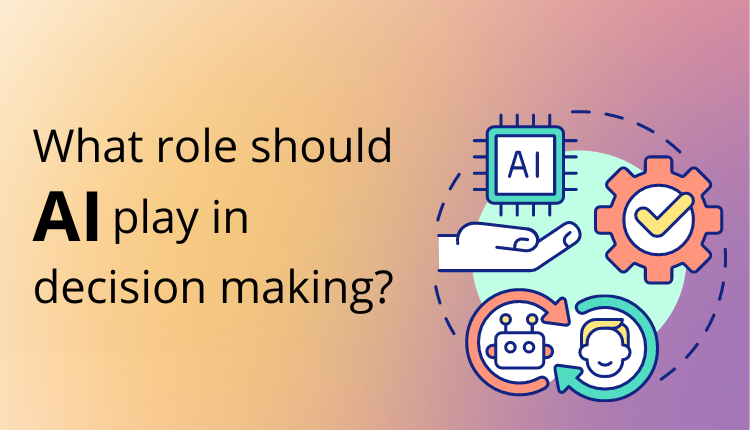The integration of technology into our everyday lives has produced a staggering amount of data. While this data is a gift to those who wish to learn and understand what is happening in the world, handling it is also a challenge.
At no other time in history, have we had access to so much information about how things work and why. Business leaders, researchers, and policymakers want to use data to make good decisions for the future.
But there is a downside to the vast amount of data now available to us— how to process it in a way that it is helpful to us.
The sheer volume of data generated and tracked by technology makes it nearly impossible for humans to process it in a relatively short amount of time. For urgent issues, additional data processing help is needed.
This help comes from artificial intelligence (AI). AI is increasingly stepping in to fill the gap between raw data and useful reports and provide an analysis that people can use to improve the world around us.
Table of Content:
But how much of a role should AI play in our decision-making, especially when it comes to urgent and important policy issues? Let’s look at the capabilities that AI has today, the role it can play in assisting us with decision-making, and the risks involved in integrating AI into data processing.
How Does AI Help Businesses Now?
The truth is, that AI is already deeply integrated into our lives. Many of us interact with AI on a daily basis without even realizing it. The main place that we interact with AI is online.
Whether searching for the day’s weather, scrolling social media news feed, or buying a new t-shirt from an online shop, AI is tracking our movements and analyzing our habits.
AI algorithms detect what catches our interest and automatically curate our news feed, suggest local weather results, and advertise products similar to what we may have already purchased.
The ability to use the data collected by AI on online consumer behavior has become an essential function in many businesses today. Programs like Google Analytics are a prime example.
Google Analytics allows businesses to use AI algorithms on their websites, mobile apps, and even gaming consoles to understand the behavior of their customers or site visitors. The data collected is then processed by AI and conveyed through reports that offer information on the effectiveness of advertising campaigns, popular products, and other marketing insights.
With this type of data, businesses can understand how effective their advertising is, see which target markets they are successful in reaching and refine their overall strategy.
In addition to marketing decisions, businesses rely heavily on AI technology to provide fast, 24/7 customer relationship management. It is not uncommon to visit a site and have a helpful window pop up in the corner offering to answer any questions you may have.
That window is usually an AI Chatbot programmed with answers to the most frequently asked questions about the site or its products. AI is also used to analyze site queries to determine which questions customers are likely to ask and which answers they find helpful.
The improvements in targeted marketing and customer service that AI algorithms offer tend to translate to increased sales.
The Pros and Cons of AI Decision Making
It’s clear that AI algorithms are already helping humans process and analyze large amounts of data to make important decisions. However, AI was created by humans, and like humans, it is also imperfect.
There are pros and cons of using AI to influence decision-making, and as we continue to develop this technology and integrate it into our workflow, it is critical to keep these pros and cons in mind.
In addition to the pros of AI listed above, we can thank AI for reducing human workload and enabling us to make important decisions quickly. Moreover, AI is constantly learning as it works, so each batch of data it processes, insights that it produces, and course of action it recommends informs its future output.
The ability to learn in this way is one of the biggest advantages of AI. AI can quickly identify trends, sort and categorize data sets, and process data rapidly in ways that would take humans months, if not years.
However, AI is far from perfect. One key issue with AI algorithms is that they are only as good as the data they draw from. If data is collected with a flawed methodology, the insights produced from that dataset will be flawed as well.
Similarly, many AI algorithms operate on parameters and goals that are set by people. People are prone to biases, which can seep into programming as well.
Finally, while AI certainly produces some interesting results, it can’t quite replicate the human creativity. What it can do is take care of the hard work of data processing to free up humans for work that requires judgment, creativity, and other more nuanced thinking.
The Future of AI in Decision Making
As AI continues to develop, we can expect to see it integrated more into our daily work and activities. AI tells us what our customers want, helps us edit our academic papers, and suggests new music that we might enjoy listening to.
However, we should be cautious of the AI’s potential to reflect human biases and errors in data collection. In addition, AI is subject to ethical concerns surrounding data privacy and protection, as well as the potential for AI algorithms to manipulate and spread misinformation. S
ocial media platforms like Facebook, YouTube, and Twitter have all suffered from the “echo chamber effect,” which has led to devastating events like the genocide in Myanmar and the spread of vaccine misinformation.
Still, AI has had promising potential breakthroughs in fields like healthcare and pharmaceutical development. It’s clear that AI is here to stay, and we need to do our best to incorporate it effectively into our decision-making.
Web Stories:








